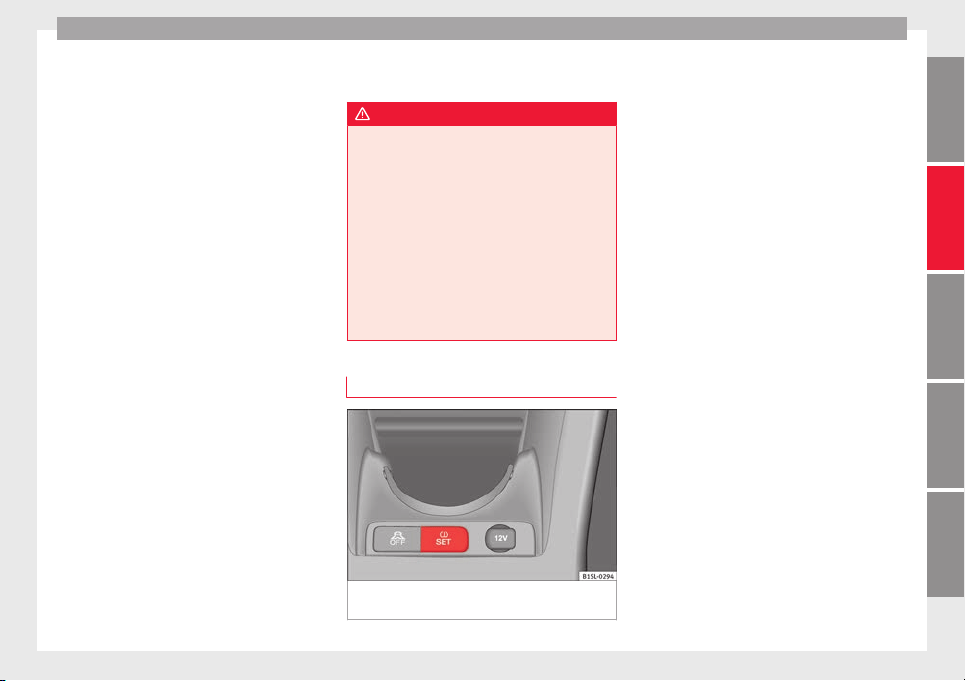Loading ...
Loading ...
Loading ...

Wheels and tyres
Foreign bodies in the tyre
●
Do not remove foreign bodies if they have
penetr
at
ed thr
ough the tyre wall!
●
You should obtain professional assistance
immediately.
Tyre wear
The wear of tyres depends on a number of
factors, for example:
●
Driving style.
●
Unbalanced wheels.
●
Running gear settings.
Driving style: Driving round bends quickly or
sudden acceleration or braking speed accel-
erates tyre wear. When the driving style is
normal, if the tyres wear too quickly, have the
running gear settings checked at a special-
ised workshop.
Wheel run-out: The wheels on new vehicles
are balanced. However, certain circumstan-
ces may lead to imbalance (run-out), which is
detected as vibrations in the steering wheel.
Run-out leads to wear of the steering and
suspension. In the event of run out, the
wheels should be balanced again. When a
new wheel is fitted, it should be balanced
again.
Running gear settings: an incorrectly posi-
tioned running gear increases the wear of
tyres and affects your safety while driving. If
tyres wear too quickly, have the wheel align-
ment checked at a specialised workshop.
WARNING
If you notice unusual vibration or the car pulls
to one side whi
le driving, this may indicate
that one of the tyres is damaged.
●
Reduce speed immediately and stop, while
observing the highway code.
●
Check the wheels and tyres for damage.
●
Never carry on driving on worn tyres or
wheels. Request qualified assistance immedi-
ately.
●
If there is no visible exterior damage, drive
slowly and carefully to the nearest special-
ised workshop and have the vehicle checked.
Tyre monitor system*
Fig. 176 Centre console: tyre monitor system
b
utt
on
The tyre control lamp compares wheel revolu-
tion
s
and w
ith it, the wheel diameter of each
wheel using the ESC. If the diameter of a
wheel changes, the tyre control lamp
lights up. The wheel diameter changes when:
●
Tyre pressure is insufficient.
●
The tyre structure is damaged.
●
The vehicle is unbalanced because of a
load.
●
The wheels of one axle are under more
pressure (for example, driving with a trailer or
on steep slopes).
●
The vehicle is fitted with snow chains.
●
The temporary spare wheel is fitted.
●
The wheel on one axle is changed.
Tyre pressure adjustment
On adjusting tyre pressure or changing one
or more wheels, the ››› Fig. 176 button must
be kept pressed down, with the ignition on,
until an acoustic signal is heard.
If the wheels are under excessive load (for ex-
ample, driving with a trailer or heavy load),
the tyre pressure must be increased to the
recommended value for a full load (see the
sticker on the inside of the fuel flap). If the
tyre monitor system button is pressed down,
the new tyre pressures are confirmed.
»
205
Technical dataAdviceOperationEmergenciesSafety
Loading ...
Loading ...
Loading ...